You remember the phrase Bo knows Football? Or was that Baseball? Well, Philippe Cambie knows Chateauneuf du Pape. It’s difficult to disagree with that statement. Philippe Cambie works with more growers and producers in the Southern Rhone Valley than any other consultant. He is involved in the vineyards and the cellars. Similar to what happens when EF Hutton speaks, when Philippe Cambie discusses the 2013 Chateauneuf du Pape vintage, everyone listens.
The 2013 Chateauneuf du Pape vintage is year that will be marked by its late maturity. That late maturity took place in vineyards throughout the Southern Rhone Valley. This is similar to what took place in previous vintages like 1970 and 1980.
The 2013 vintage in Chateauneuf du Pape experienced similar weather patterns that affected much of Europe. The year can be easily characterized by its very low yields and relatively atypical equilibria, where fresh fruit and freshness replace power.
In the 2013 Chateauneuf du Pape vintage, the spring was one of the coldest and wettest in recent years. To give an example, there were periods that averaged 1 degree Celsius and only 4.4 Celsius for the maximum temperatures during the months of April, and May. The 2013 Chateauneuf du Pape growing season was not just cold, it was also wet. For example, for the months of April, May and June, the Southern Rhone experienced 217 millimeters of rain. In 2012 during the same period, it rained 165 millimeters. 2011 was quite dry with only 17 millimeters and in 2010, the area received 107 millimeters of rain. Due to the combination of cool weather and damp air, this slowed down the vine growth causes high flowering in the Grenache. Grenache is naturally sensitive to this phenomenon which prevails in the encépagement in the Rhone Valley, especially with the old vine Greanche grapes.
The 2013 Chateauneuf du Pape vintage experienced an ideally placed storm at the end of a particularly hot July. The summer of 2013 brought good weather. But it was insufficient to help catch up from the spring weather. Because of these weather patterns, the 2013 Chateauneuf du Pape vintage was later. This broke the pattern of precocity experienced in recent years. Something else to consider, 2013 Chateauneuf du Pape, is a vintage that produced extremely low yields. Chateauneuf du Pape was not the only region with low yields, Bordeaux and most European wine growing areas all experienced low yields.
The 2013 Chateauneuf du Pape harvest was long. It started during the second half of September and was not completed until early November. The harvest was spread over a long period of time as you can see, taking place in the first days of September for the young vines. Many estates waited until the end of October for old vines.
The 2013 Chateauneuf du Pape vintage will also be known for its lateness. The vintage was three weeks later than what we have seen over the last decade, which marked a return to the types of harvest dates winemakers experienced much of the time during the 70s.
The vinification for 2013 was conducted quickly, paving the way for red wines with a balance reminiscent of wines from the mid-80s. The style of 2013 Chateauneuf du Pape wines show good acidity and moderate alcohol levels in the Grenache. The wines display a good balance in the mouth due to the natural vivacity of the 2013 Chateauneuf du Pape vintage.
The Syrah and Mourvedre are more powerful than the Grenache. They have deeper colors and will produce more concentrated wines. These two grape varieties, Syrah and Mourvedre were not susceptible to sagging. Yields were also higher for the Syrah and Mourvedre.
The white 2013 Chateauneuf du Pape wines deliver a nice aromatic freshness with citrus, white flowers and exotic fruits. By their physico- chemical equilibria, they show a beautiful potential. Similar to what took place with the Grenache based red wines, Grenache Blanc was also low in yields. This will allow the Roussanne and Clairette to shine with all their aromatic potential.
For me, the best wines of the vintage comes from Nimes, Lirac, Tavel and Gigondas. Vineyards in those appellations produced some very nice wines combining fruit with power.

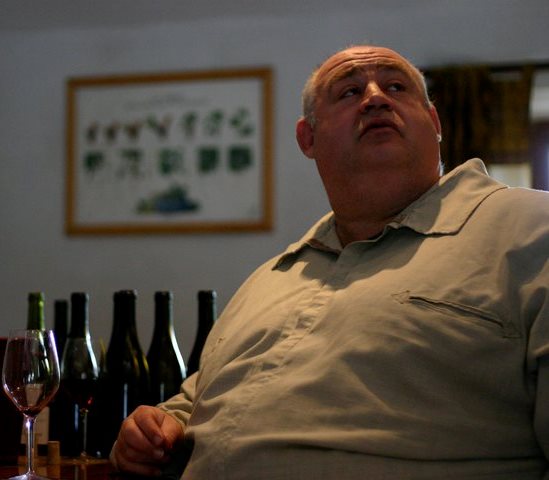
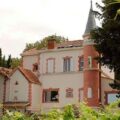
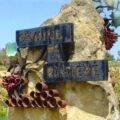
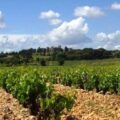
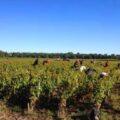
10 Comments
“@JeffLeve: Philippe Cambie on 2013 Chateauneuf Southern Rhone Vintage and Harvest http://t.co/343E6jzHpl“
Exclusive article, Philippe Cambie on 2013 Vintage, Growing season, Harvest & Wines in #Chateauneuf & Southern #Rhone http://t.co/DMRalVxu0v
#WineTalk: Philippe Cambie on 2013 Chateauneuf Southern Rhone Vintage and Harvest http://t.co/SO1iS1IAJb
Philippe Cambie on 2013 Chateauneuf Southern Rhone Vintage and Harvest: Philippe Cambie discusses in de… http://t.co/KnfUoR90Xx #wine
Philippe Cambie on 2013 Chateauneuf Southern Rhone Vintage and Harvest: Philippe Cambie discusses in de… http://t.co/QeicLTgCsV #wine
Philippe Cambie on 2013 Chateauneuf Southern Rhone Vintage and Harvest: Philippe Cambie discusses in de… http://t.co/g53drT5kSg #wine
Philippe Cambie on 2013 Chateauneuf Southern Rhone Vintage and Harvest: Philippe Cambie discusses in de… http://t.co/FjmmDA1pLH #wine
Philippe Cambie on 2013 Chateauneuf Southern Rhone Vintage and Harvest http://t.co/zUUf7wBBee
Philippe Cambie on 2013 Chateauneuf Southern Rhone Vintage and Harvest http://t.co/ndoOvXvzoH
Philippe Cambie on 2013 Chateauneuf Southern Rhone Vintage and Harvest:
You remember the phra… http://t.co/qtFP7wYQqO (via @jeffleve)